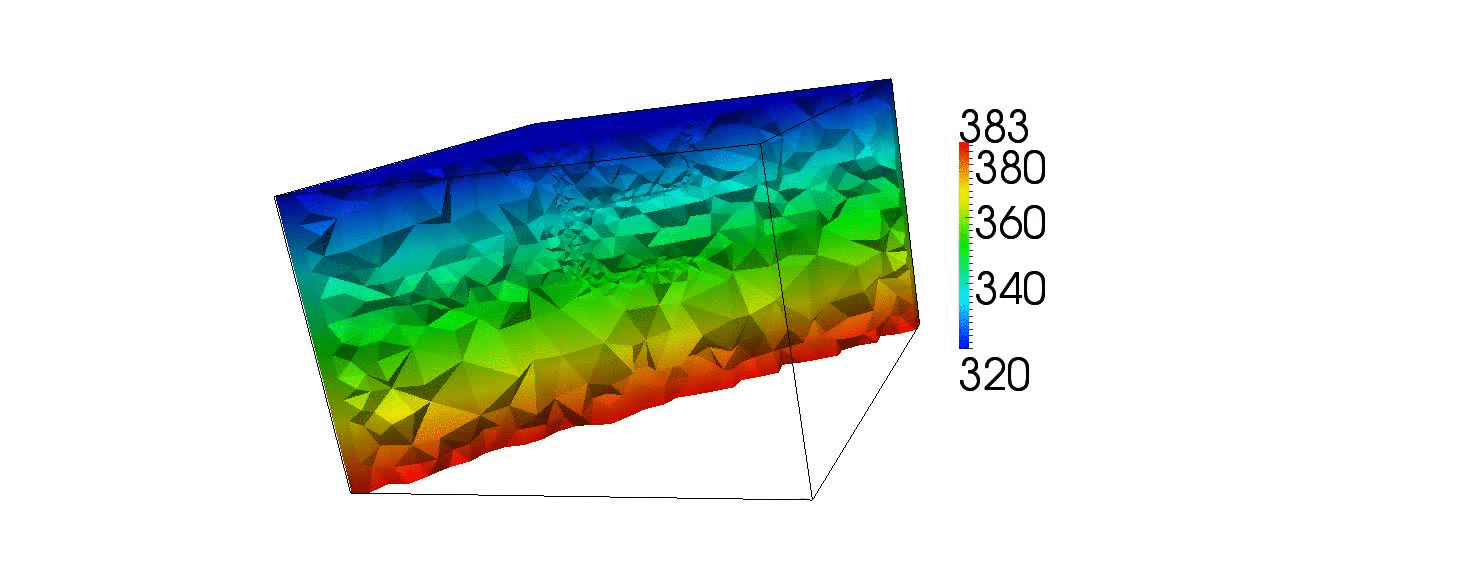
Geothermal energy is carbon neutral, widely available and can provide a stable supply. Geothermal reservoirs have the potential to make a significant contribution to renewable energy production. Subsurface reservoirs and aquifers can also be used for large scale energy storage, to provide low carbon heating and cooling, and store electricity from intermittent renewable sources such as wind and solar.
Optimising fluid flow and heat transport in heterogeneous aquifers and reservoirs is key to efficient and sustainable resource utilisation, but is challenging because flow and transport in the reservoir are controlled by a complex array of geological features and thermal-hydrological-mechanical-chemical (THMC) processes, many of which are highly uncertain.
We use the advanced simulation technology in IC-FERST to model water and heat flow in geothermal reservoirs. We collaborate with other industry and academic groups worldwide, who are researching and implementing new methods for drilling and operating geothermal wells. We also collaborate with other departments, labs and institutes at Imperial College, including the Energy Futures Lab, the Centre for Environmental Policy and the Grantham Institute. We collaborate with the British Geological Survey and the University of Manchester and the University of Leeds in our work on storing energy in aquifers for heating and cooling (ATESHAC) and on urban geothermal resources (SMARTRES).

Cut through animation of a 3D numerical simulation using IC-FERST. The model simulates cold water injected into a hot reservoir and produced from a horizontal well pair. Colours denote temperature. Dynamic unstructured mesh adaptivity is used to capture the cold water front moving into the reservoir.
Selected references
R Stemmle, R Hanna, K Menberg, PA Østergaard, M Jackson, I Staffell et al., 2024, Policies for aquifer thermal energy storage: international comparison, barriers and recommendations, Clean Technologies and Environmental Policy, 1-24
G Regnier, P Salinas, MD Jackson, 2023, Predicting the risk of saltwater contamination of freshwater aquifers during aquifer thermal energy storage, Hydrogeology Journal 31 (4), 1067-1082
Regnier G, Salinas P, Jacquemyn C, et al., 2022, Numerical simulation of aquifer thermal energy storage using surface-based geologic modelling and dynamic mesh optimisation, HYDROGEOLOGY JOURNAL, Vol: 30, Pages: 1179-1198, ISSN: 1431-2174
Salinas P, Regnier G, Jacquemyn C, et al., 2021, Dynamic mesh optimisation for geothermal reservoir modelling, Geothermics, Vol: 94, Pages: 1-13, ISSN: 0375-6505
Titus Z, Heaney C, Jacquemyn C, et al., 2021, Conditioning surface-based geological models to well data using artificial neural networks, Computational Geosciences: modeling, simulation and data analysis, Vol: 26, Pages: 779-802, ISSN: 1420-0597
Jacquemyn C, Pataki MEH, Hampson GJ, et al., 2021, Sketch-based interface and modelling of stratigraphy and structure in three dimensions, Journal of the Geological Society, Vol: 178, Pages: 1-17, ISSN: 0016-7649
Yekta A, Salinas P, Hajirezaie S, et al., 2020, Reactive transport modeling in heterogeneous porous media with dynamic mesh optimization, Computational Geosciences: modeling, simulation and data analysis, Vol: 25, Pages: 357-372, ISSN: 1420-0597